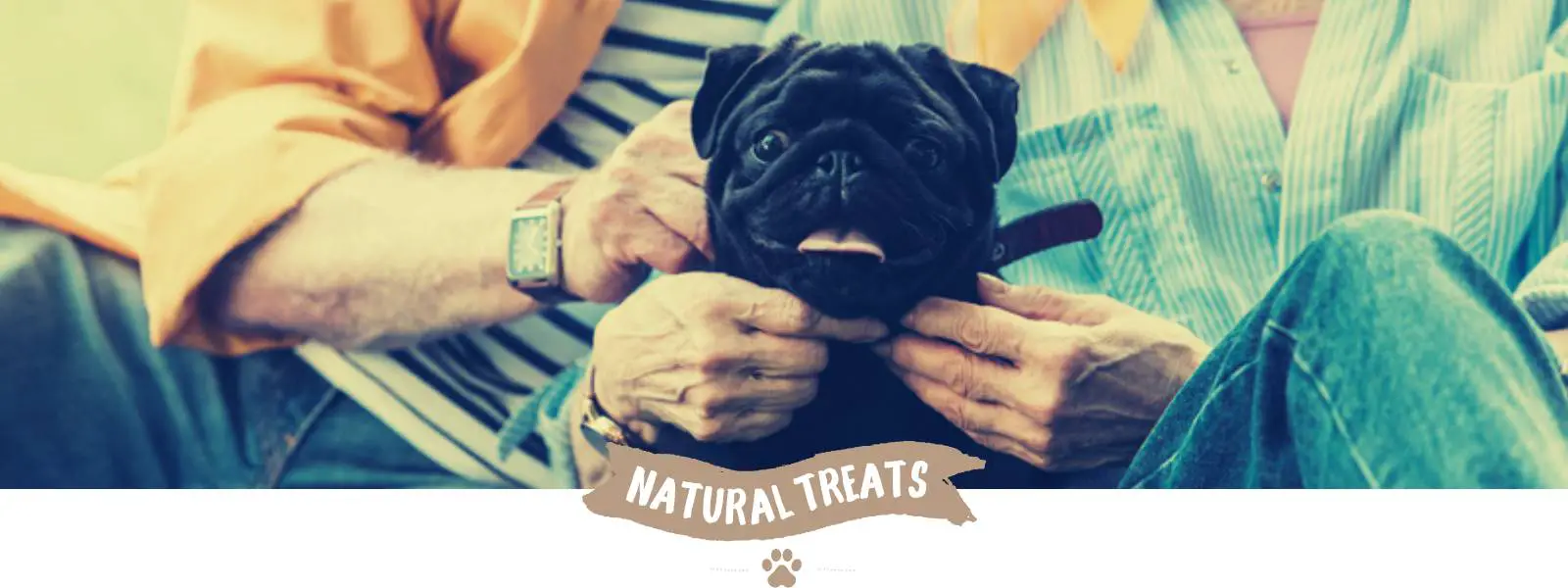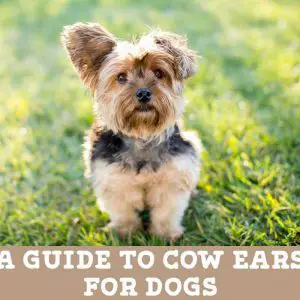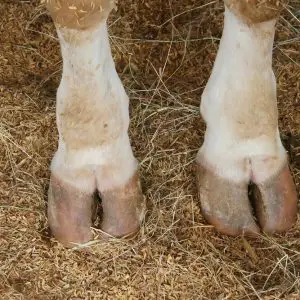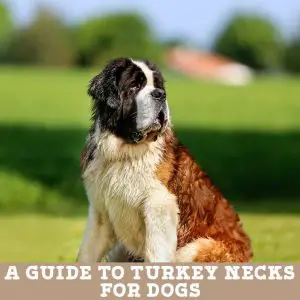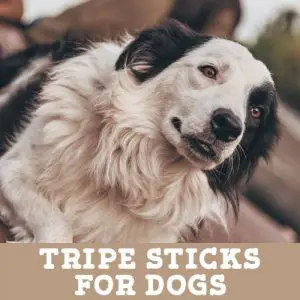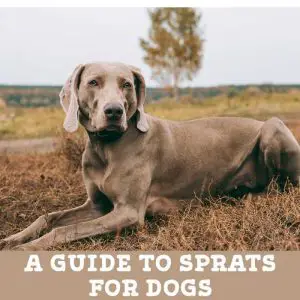Have you seen lamb trotters for dogs in your local pet store and wondered whether they would be worth buying for your dog? Maybe you’re looking at natural dog treats and want to try something new.
But undoubtedly you’ll first want to find out if lamb trotters are safe for your dog? And what exactly are the benefits of these treats? In this article, we will discuss all there is to know about lamb trotter treats.
Key facts
Lamb trotters are by-products of the lamb meat industry. They are usually treated to remove the hair and clean them before dehydrating by air baking.
Lamb trotters provide health benefits such as chewing time to reduce anxiety, improving dental health and improving joint health.
There are several risks associated with lamb trotters, including obstructions, splintering leading to gut perforations, and tooth fractures.
Some great alternatives to lamb trotters include beef tendons, antlers and raw, meaty (non-weight bearing) bones.
What are Lamb Trotters?
Lamb trotters are treats made from the lower legs of lambs, cut off from the carpus (wrist of the front leg) or tarsus (hock of the back leg). It includes a long bone (metacarpal or metatarsal), fetlock joint, smaller lower leg bones, and insides of the hoof. They don’t usually contain the keratin outer layer of the hoof or the hair, and are therefore mainly made up of ligaments, tendons, dehaired skin and bones.
Hoof trotters are usually dehydrated through air baking at a high temperature. It locks in plenty of taste, and kills off bacteria, but does make them relatively hard to chew which contributes to some risks discussed further on.
Depending on whether any preservatives have been used, and the cleaning process prior to dehydrating, lamb trotters can vary in colour from brown (the most natural) to white (the most processed).
Benefits of Lamb Trotters for Dogs
There are certainly many nutritional benefits associated with lamb trotters, including being high in protein and beneficial for joints and teeth.
Key benefits
Dental Health
Excellent at cleaning teeth; removing plaque, tartar and bacteria.
Long Chew Time
Even a heavy chewer will struggle to defeat a lamb trotter in less than an hour.
Joint Health
A great source of collagen, glucosamine and chondroitin which help improve joint health.
Dental Health
The main draw to lamb trotters is their ability to clean teeth exceptionally well. They provide a brilliant abrasive surface against the enamel of teeth, removing plaque, bacteria and food build up. While there isn’t a lot of research looking at the effects of dehydrated bone on dental health, research has suggested that raw bones are just as effective (if not more effective) than tooth brushing to keep bacteria counts on teeth low. Therefore it can be assumed that dehydrated bones are probably similar.
Chew Time
They provide plenty of chewing time, which not only is great for teeth, but also really good for keeping your dog occupied. Even for dogs that are keen chewers, they can last for almost an hour. Chewing is great for distraction and mental health. It triggers the release of endorphins, which help reduce anxiety and make your dog feel relaxed and happy.
Joint Health
Lamb trotters are also great for joint health. The connective tissues in lamb trotters, such as dried ligaments and tendons, contain plenty of collagen, glucosamine and chondroitin, which are compounds found in joints. They stimulate the production of glucosaminoglycans (GAGs) which make up cartilage and also improve joint fluid through stimulating the production of hyaluronic acid.
However, there is a variable amount of glucosamine and chondroitin in each individual product, and it is unlikely to be sufficient to make enough of a difference alone. Therefore, joint supplements are a superior option to ensure your dog is provided with a clinically relevant dose of the compounds. It’s also important to remember that neither supplements nor lamb trotters are substitutes for taking your dog to the vet to receive treatment when he is uncomfortable.
Nutritional Information for Lamb Trotters
The nutritional make up of lamb trotters does depend somewhat on the individual products. However the following nutritional analysis can be expected:
Lamb Trotters (Dried)
The remaining portions of a lamb trotter is made up of fibre, ash (minerals) and carbohydrates.
So what does this nutritional make up mean? It means that dehydrated lamb trotter treats are high in protein, moderate in fat and low in moisture. This is great, as dogs thrive off a high protein diet. Protein is essential for building strong muscles, DNA synthesis and making hormones and enzymes.
Fat is also a great energy source for dogs, and should only be restricted if your dog is obese or has a condition which is worsened by high amounts of fat, such as pancreatitis, inflammatory bowel disease and exocrine pancreatic insufficiency.
The calorie content of lambs trotters is variable from one product to another, but it is likely to be around 2000-2500 kcal/kg. This is a low to moderate amount of calories for a dehydrated food, but significantly more per kilogram than fresh trotters.
Feeding Guide
Treats should not make up more than 10% of your dog’s diet, and since lamb trotters are not small treats, they will contribute significantly to this percentage. This means for a small dog, one a week would be plenty, whereas a large dog could have several lamb trotters a week.
Disadvantages & Risks of Lamb Trotters for Dogs
Feed Under Supervision
Lamb trotters can sometimes splinter which in turn can result in perforations. Your dog might also be able to bite off large chunks which runs the risk of a blockage. It’s definitely advisable to supervise your when when giving them lamb trotters.
While lamb trotters sound great for dogs, they do come with some serious risks. Firstly, bones which bear weight when the animal is alive have to be much stronger than non-weight bearing bones. This means that leg bones can be extremely hard and potentially cause tooth fractures. This is particularly the case for strong of over-exuberant chewers.
In addition to that, once subjected to heat, bones become brittle with the potential to break or splinter. If large pieces break off, they could cause a choking incident or an obstruction in the intestine. Smaller, sharp pieces however are even more dangerous and could cause perforations and intestinal damage. Both blockages and perforations can be life threatening.
While it’s difficult to prevent this entirely, the risks can be significantly decreased if you supervise your dog at all times when he has a lamb trotter. This way, you can take pieces away as soon as they break off, or take the lamb trotter away if your dog becomes over enthusiastic.
Of course, all these risks can be avoided by choosing an alternative treat altogether.
Lamb Trotters for Puppies
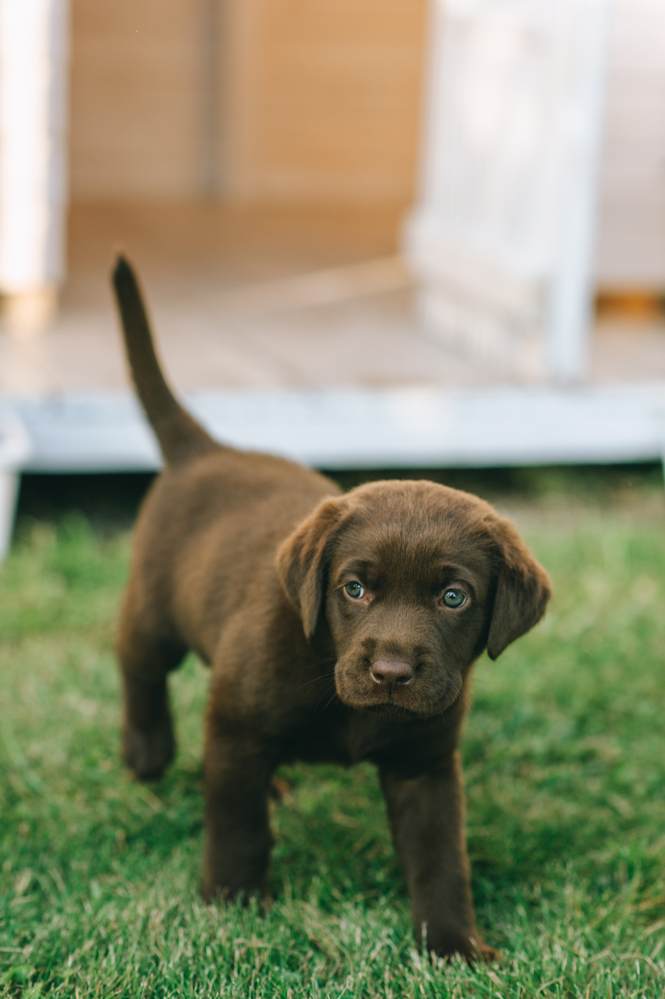
There’s a lot of different advice on the internet regarding puppies and lamb trotters. Some places suggest giving puppies lamb trotters from 12 weeks to help with teething. Others recommend from six months, when they have their stronger adult teeth, since lamb trotters are hard and can cause tooth fractures.
The reality is, puppies should not be given bones, or treats containing bones until they are fully grown. This is because bones are high in calcium and phosphorus, and imbalances in these minerals can lead to developmental abnormalities. Therefore, it is a good idea to avoid lamb trotters if you have a puppy.
Alternatives to Lamb Trotters
If you like the sound of lamb trotters but are not sold on them, why not try one of these alternatives?
- Beef tendons: Tendons are excellent for both dental health and joint health, as they are tough and contain all the connective tissues that trotters contain. They are also entirely digestible, and don’t splinter like bones.
- Raw, meaty bones (RMBs): Raw bones from non-weight bearing parts of the animal are much safer than dried bones as they are less likely to cause tooth fractures or splintering. They are great for teeth cleaning, however can still cause blockages if you don’t monitor your dog and take away chunks that they bite off.
- Antlers: If you’re looking for something safe that provides chewing time to calm your dog, antlers might be a good option. They are tough like bones, but don’t splinter or break. Instead your dog would just slowly grind them down. However, they don’t provide any nutritional value since they are not ingested.
FAQs
There are certainly many nutritional benefits associated with lamb trotters, including being high in protein and beneficial for joints and teeth.
Lamb trotters can be hard which presents a risk of your dog breaking their teeth, especially if they are a vigorous chewer. There is also a risk of splintering which, if it happens, can create a choking hazard or cause obstruction.
Lamb trotters have a unique smell to them. Some people hate the smell of lamb, others don’t mind it. But when dehydrated, the smell can be accentuated. In addition to this, lamb trotters are slightly greasy. While these qualities might be off-putting to you, they are what makes dogs go crazy for them.
You can easily deal with these unpleasantries by keeping the lamb trotters in a sealed container, and when giving one to your dog, encourage them to chew it outside.
Lamb trotters can cause diarrhoea in dogs, however it’s not common. As with any new food product, too many too quickly can trigger diarrhoea.
In addition to that, if your dog has an allergy to lamb protein, it is a good idea to avoid lamb trotters as they may trigger a reaction, such as diarrhoea or itchy skin.
Lamb trotters can easily cause blockages as they are cooked bones. Therefore they can splinter and break off easily, particularly if your dog is a strong chewer. This is why it is essential to monitor your dog at all times if you give him a lamb trotter.
Lamb trotters are by-products for the lamb meat industry. Most abattoirs trim the lower leg off the carcass and dispose of them.
While animal by-products have some bad press, it is actually great to make use of by-products, as then the whole of the animal is being used and not going to waste.
A small dog should have no more than one lamb trotter per week. Large dogs can have more than one a week.
Lamb trotters should last a pretty long time. Even a big dog with strong jaws will struggle to demolish a lamb trotter in less than an hour. For smaller dogs it may take a couple of days.

